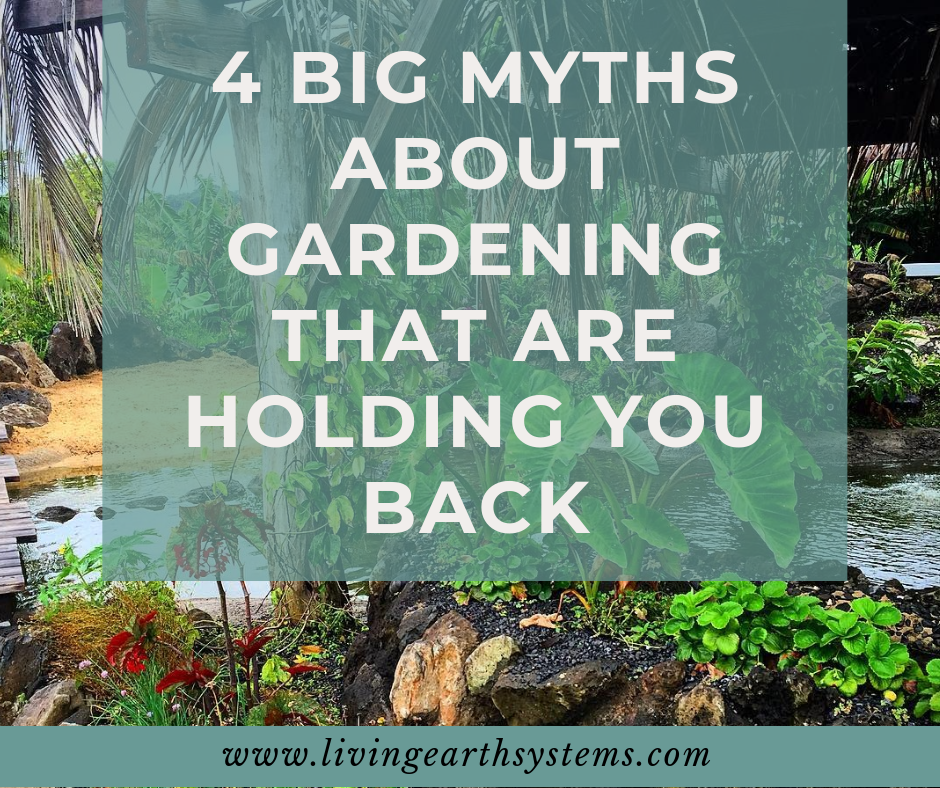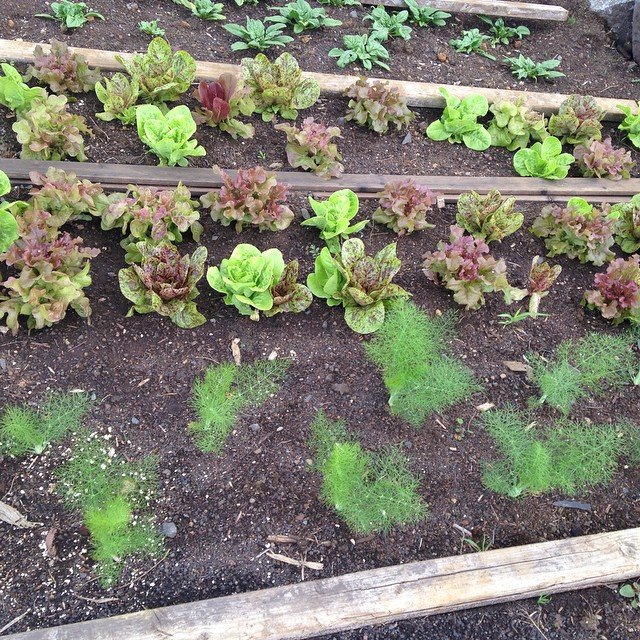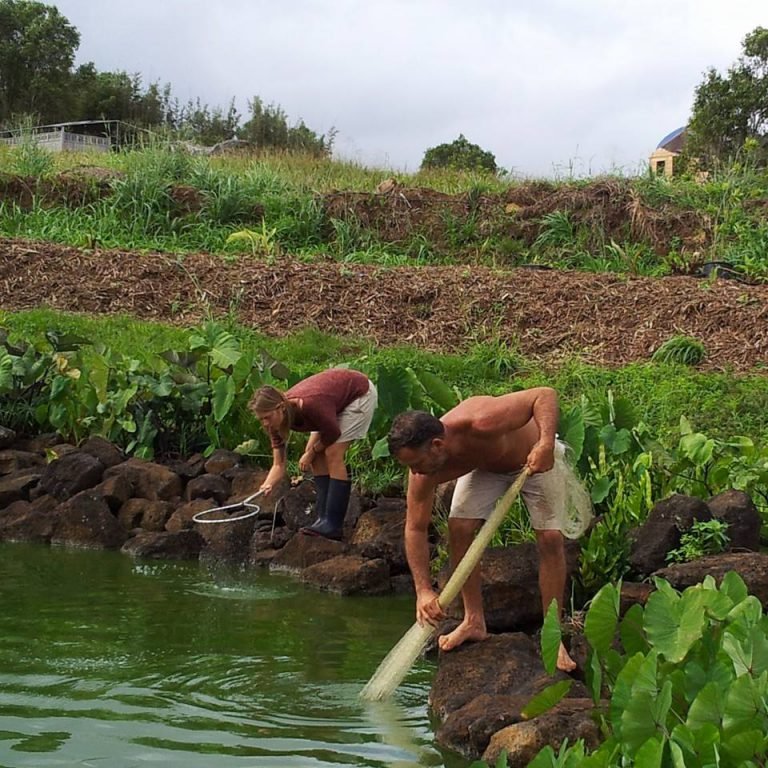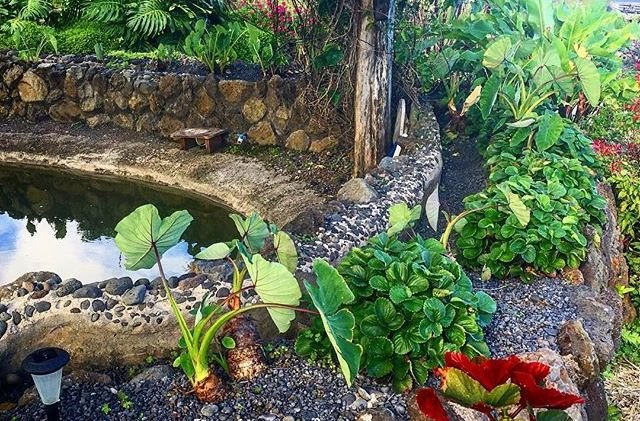4 myths about gardening that are holding you back
We are here to put to bed some of the myths that may be holding you back.
Our limitations are only limitations if we see them as that.
What you believe is your truth. We’re here to help you believe in yourself.
MYTH #1: “I DON’T HAVE A GREEN THUMB.”
The most common myth about gardening is that some people possess this magical green thumb.
So that’s not true… You do not need to have a thumb to garden! Are many creatures besides ourselves that do some gardening that don’t even have thumbs but we’ll fill you in on that later.
The fact is: Growing food relies on you and your commitment…
… to observe,
… to be patient,
… to be consistent in your interaction,
You also have to be willing to “fail” because:
“YOUR MISTAKES ARE YOUR GREATEST ASSETS.”
So you thought the other guy has a green thumb and he pulled it off the first try. You tried and it died again and again and again.
But eventually you’re gonna learn from your mistakes. You’re gonna understand that if you’re consistent, you’re patient and you observe what is really going on, look beyond the surface, try to look and see the things you’re not paying attention to…
The rewards from this are golden.
This metaphor transfers into your life on so many different levels.
I cannot explain to you the idea of being one with your surroundings and it’s simply paying attention, observing what’s going on, being patient enough to see the results of it.
So the idea that one person would have a green thumb and another would not is a myth. Because it’s really about you. It’s about committing to growing food. It’s about observing and really paying attention to what’s going on.
Everybody has something they are good at. Some people with video games, other people it’s driving a truck or singing. But it doesn’t mean that a person that drives a truck can’t sing or that the person that sings can’t drive a truck. You can teach an old dog new tricks and a new dog old tricks – we don’t have to bind ourselves to these ways of thinking.
So please let’s realize that everyone has a green thumb waiting to happen.
Don’t be afraid to get your hands dirty. Just do it!
Reality is – we can all do it if we follow some of these simple rules. And the main thing above all is just commit yourself to it and take the time.
I can give you so many countless examples of people who thought they didn’t have a green thumb and as soon as they planted one seed and were patient enough to water it (or not water it), by observing whether it was too wet or too dry, not being afraid to have that seed die and try it again… They eventually realize that it’s not rocket science.
Caveman did it. They moved from the idea that they couldn’t and they started to understand alchemy on the planet by taking time and committing themselves.
“IT’S A LOT HARDER TO LEARN TO DRIVE A CAR THAN IT IS TO SPROUT A SEED. TRUST ME ON THAT.”
A relationship with a plant isn’t that much different than having a relationship with a pet or a friend. Growing a plant is just like maintaining any other relationship. If you don’t feed your pet for a few days or a few weeks it’s going to die. We have to establish relationships with the earth and our garden.
If we start to look at the nature around us as full of life and that we’re sharing this planet and we’re supposed to be interacting not displacing, then there’s a lot of beauty around us. Just like when we surround ourselves with friends or family or people that we can make deep connections with.
To raise a healthy child we need to listen, to be patient, to let them go through their mistakes. We need to be consistent in our lessons to them.
To raise a healthy plant you really have to pay attention to what’s going on. You have to nurture it, you have to be patient with it, and you have to be consistent with it. So these metaphors transfer through our lives in many different ways.
How we treat each other, how we treat the planet, how we treat the plants, and how they treat us, seems to have this incredible circular motion that everything is beautiful.
MYTH #2: “I DON’T HAVE ENOUGH SPACE.”
A lot of the times we make up excuses and we make up reasons of why we can’t do it, but let’s start to focus on some of the reasons why we can do it.
Space Constraints…
People are realizing the potential of urban farming and how to feed ourselves on small hyper-local scale that produces food, and at the same time sequesters carbon, and helps us deal with some of the waste products of our modern lifestyle.
“I live in the city in a small apartment.”
“I have nothing but a little balcony.”
“How am I possibly going to grow food with such little space?”
In this day and age, an LED light, an aquarium, and a piece of PVC can grow all of your herbs for your culinary expressions in your kitchen. You can have some beautiful fish to highlight the day and even act as a canary in the gold mine – an environmental monitor.
Days in coal mines, gold mines and other areas where they had to be underground they would keep a canary in a cage and if that canary died it would be the first indication that the CO2 levels were too high and there was not enough oxygen. This is where that metaphor comes from.
An aquarium is a great tool if the water is clear and your fish are healthy, they’re being fed, you’re taking care of them, and you’re doing the maintenance you need to do. (Then you can add some plants growing on top of it, vertically or horizontally to uplevel your aquarium into an aquaponics system.)
Aquaponic systems (or as we create them – living earth systems) are just one example of addressing space constraints that will help to give you an idea of how you can take a parking lot and turn it into a paradise. Or taking a kitchen counter and turning it into an incredible food production system. It also makes your house beautiful, and can add some humidity if you live in a dry area, or are experiencing a dry season.
Many other options can be born out of this… so the idea that we’re limited by space these days is easily addressed with the technology we have these days that can completely change the game.
Going vertical with an aquaponics system, in a 4 x 4 area, 8 feet tall, we can grow over 150 heads of lettuce. Do the math, it’s quite simple.
And if it’s indoors incorporating LED lights and timers, completely automated. Outside you don’t even need the lights.
BUT AGAIN, WHAT DOES IT COME DOWN TO? OBSERVATION, CONSISTENCY, PATIENCE, AND THE COMMITMENT COMBINED WITH THE WILL AND THE WANT TO DO IT.
So we’re not really limited by these constraints anymore.
With the invention of new technology like:
LED lights
permanent magnet low energy drives for pumping water and air
3-D printers for using recycled plastic to build these systems…
… we can multi-tier our commitment and how many functions we stack.
By creating multi-tiered systems, incorporating symbiosis through their different functions, we are able to:
sequester carbon
feed ourselves
at the same time feeding the system from itself
We can help to regenerate our depleted atmosphere and other resources, like living soil and clean water, for future generations through these very simple actions.
All these things can be done and we don’t have to be limited by our thumbs.
WORKING WITH YOUR COMMUNITY: YOU’RE NOT LIMITED BY YOUR LIMITED SPACE.
By getting together with your local community to start a community garden, or your apartment complex and doing it on the roof, or finding a community garden in your city, you don’t have to be limited by your single apartment, balcony, or yard.
If you don’t have a balcony and you are in a big apartment building, well, apartment buildings usually have some little area somewhere that can be utilized. A lot of the time it’s a roof. So it could be as simple as some container gardens on the roof or an aquaponic system that is shared and cooperated between the tenants. Cooperative apartment buildings or neighbors in a progressive suburb could have a solar panel structure that allows for everyone to interact in their own community garden on the roof or on the sidewalk or in the common area.
There are a lot of ways that we can grow food and we can change your environment through this interaction.
“WHAT AM I GONNA DO WITH MY COMPOST? I’M IN APARTMENT! I CAN’T DO ANYTHING WITH IT.”
But what if you’re in an apartment building and everybody brought their compost to a central apartment or utility area or the trash area?
Every apartment building is going to have some structural area for dealing with municipal waste. That can serve as a central hub for composting — (and in case you missed it… here are our 7 reasons why you should be composting yourself and not outsourcing it to anyone else) — then people could use the compost to hang planters outside their window and grow food.
These are just some ideas that are happening in big cities and progressive neighborhoods right now.
Remember: People are realizing the potential of urban farming and how to feed ourselves on small hyper-local scale that produces food, and at the same time sequesters carbon, and helps us deal with some of the waste products of our modern lifestyle. So these kind of stacking functions together and creating agricultural systems that aren’t so dependent on space.
GARDEN MYTH #3: “IT’S EASIER TO GROW FOOD IN HAWAII THAN THE MAINLAND.”
We hear this all the time… “well it’s easy for YOU to grow food – you live in Hawaii!”
Lots of people see how we’re growing things in Hawaii at our farms and they say, “Well that’s easy for you to do there, but how am I going to do this here on mainland America [or other parts of the world]?? We don’t have that type of soil, or the fertility, or the climate, or the…!”
The “It’s easier for you” part… it’s actually untrue!
It’s not actually easy. What happens is your value system changes.
Your understanding of what wealth means will change.
And your connection to what’s all around you will grow as you grow.
A LOT OF YOU LIVING IN OTHER AREAS OF THE WORLD HAVE SOME OF THE BEST POTENTIAL FOR SOIL.
YOU HAVE THE ABILITY TO BUILD INCREDIBLE SOIL FROM SIMPLY THE MINERALS AROUND YOU, AS WELL AS PLENTY OF OTHER WASTE STREAMS THAT CAN BE USED IN THIS PROCESS INSTEAD OF BEING WASTED.
A lot of it really comes down to solid management. A good garden is a well-managed garden. Or at least being observant enough to let the nature of the garden help manage it for you, and then you just need to stick to the simple rules observation, consistency, patience, and your commitment, regardless whether you have a thumb or not. Or whether you live in Hawaii or not.
Once you learn how to manage your own waste products (food, paper, yard…) and turn it into soil, then you are empowered with that knowledge and that myth can be completely absolved.
One of the reasons I say that the myth that “it’s easier to grow food in Hawaii” is kind of ludicrous is that in most places outside of Hawaii:
You don’t have the fruit fly we have here in Hawaii that wipes out 80%+ of our fruiting crops.
You don’t have year round pests because your cold season knocks them down. In a temperate climate most, if not all, of the bugs and weeds die back in the winter time.
The soil is a lot older and the rock material is a lot older and more broken down. The Hawaiian islands are fairly new volcanic rock which is pretty nutrient-deficient (meaning we have to work a lot harder to build nutrient-rich soil & nutrient-rich food)
So if you look at the bigger picture and peoples’ ideas that “oh yeah, tropical fruit can grow there so everything must grow amazingly there.”
When we set up a micro-farm in Southern California over the last few years, we felt like superheroes! We weren’t losing much of our crop to the melon fly, to the fruit fly, and all these other pests. We didn’t have to weed or mow or weed-eat multiple times a week so the maintenance was much easier. The decomposed granite that made up most of the rock of the area was incredibly mineral rich…
So when you say, “you can do it in Hawaii, but I can’t do that here,” switch that around! “You can do it in Hawaii and I can do it at home!”
You can garden, compost, and build incredible fertile soil just about anywhere in this day and age with the advance of technology, and greenhouses, vertical farming, aquaponics, soil building techniques, aeroponics…
THERE’S NO EXCUSE NOT TO BE GROWING FOOD OTHER THAN YOU WANT THE CONVENIENCE OF BUYING IT SOMEWHERE ELSE.
That’s the bottom line.
GARDENING MYTH #4: “FOLLOWING PERMACULTURE PRINCIPLES IN MY GARDEN MEANS I DON’T HAVE TO DO ANY WORK.”
Permaculture really hit the high ranks when people decided, “wow, I can farm without having to do any work. I can set it and forget it!”
This is a common myth that you hear in the permaculture community, even in the textbooks. You’ll hear that permaculture is easier than conventional farming, and this is just not true.
FARMING BECOMES EASIER WHEN YOU ADOPT THE LIFESTYLE. WHEN IT BECOMES FUN AND NOT WORK BECAUSE YOU ENJOY DOING WHAT YOU LOVE TO DO. YOU’VE BEEN ADOPTED BY THE EARTH AND YOU’VE ADOPTED THE EARTH.
There’s a fundamental liberation to understand what’s going on around you and to play a part in it. That’s a little bit different but somehow people misinterpret it and think “well I can just set it up this way. I don’t really have to do anything and it just takes care of itself.” This is not true.
All farming takes maintenance. I don’t care whether it’s a tiny aquaponic system or its a giant field, a backyard garden or a food forest.
Part of the problem is that we’ve been trying to farm for so long – taking out but not putting back in. We need to change your mentality. Responsible regenerative farming, the farming that we need to be doing now and in the future, is putting back in and taking out. It’s finding the balance of being able to build soil to grow food on not just deplete the soil to grow food.
So the whole understanding that permaculture is easier than farming, or you don’t have to do any work or any maintenance, this is truly a myth.
I think the funny part is that the beauty comes out of doing the work and doing the maintenance and learning to take a part in nature. To “set it and forget it” is just continuing the destructive cycle of expecting food to be convenient, where I can go on and live this other life but still have this going for me. You have to adopt a lifestyle change that allows you to be closer with your surroundings and play more of a part of it.
But playing a part of it definitely doesn’t mean no work.
“THE BEAUTY COMES OUT OF DOING THE WORK AND LEARNING TO TAKE PART IN NATURE.”
In the early days of permaculture, with good intention I must say, people were asking “how do we take waste products and use them to actually do agriculture?” They were hoping to not have to do much work.
So it started off by people throwing carpet in the ground to try to choke out weeds – carpets with petroleum products and gnarly chemicals in them – and people throwing down tires and turning them in the planters and growing their food in there.
WHAT THEY DIDN’T DO WAS THEIR HOMEWORK.
They didn’t look into what toxins were contained in these substances.
Definitely letting enthusiasm get ahead of the facts.
Also in Hawaii (a subtropical climate) people come from a temperate climate and they feel like all they have to do is the permaculture practices that they practiced back home. “I’m gonna put some carpet down and some tires, do some lasagna gardening…”
In Hawaii (by the way, this goes for anywhere 20 degrees north or south of the Equator) you aren’t stopping the grass. It’s going to grow right through the carpet. Guess what? You now can’t get the carpet out and it eventually becomes part of the soil, and now you’ve made it toxic with these other things that you stuck in to make it easier for yourself rather than just learning how to deal with it using nature and managing it more holistically with what’s available to you.
There are some really good things that have come out of permaculture. There’s also some really bad things that have come out of permaculture.
THAT’S WHY YOU HEAR US AND MANY OTHERS PUSHING THE TERM “REGENERATIVE AGRICULTURE.”
Regenerative agriculture is based on the idea of making it better than when you started. Instead of repeating the mistakes of our ancestors by displacing ourselves from nature we have the ability to remedy these mistakes and regenerate living soil, living forests, air, and ecosystems so then all of us may share this planet.
Promoting lifestyles that actually enable the regeneration of our planet.
Not just an easy way to do it…
… not just the way that is simple for you,
But a way that there’s really a strategy of give-and-take.
A way for you to become one with your surroundings, start to have a relationship with Nature, and understand what it means to be regenerative on this planet.
Our agriculture and our actions need to be regenerative on this planet. Sustainability isn’t enough. We need to make up for the mistakes that have been made before us.
The Regeneration starts with you.
Pin me!










